Report from AIA AAJ Fall Conference 2018: Jersey City, NJ
Tour: The Red Hook Community Justice Center -
Innovative Problem-Solving Courts at the Community Level
By: Jacob Matthias Kummer
A few weeks ago (in November) participants of the 2018 AAJ Fall Conference had the opportunity to visit the Red Hook Community Justice Center, the nation's first multi-jurisdictional community court. The Justice Center is a collaborative effort of Brooklyn’s District Attorney’s Office, the Center for Court Innovation, and the Office of Court Administration. The experimental, problem-solving court takes a restorative approach to justice using sanctions and services to address the needs of victims, the community and offenders. During its 18 years of operation the center has helped significantly reduce recidivism within the community and enhance public confidence in the government.
Red Hook - The Nation’s Former Busiest Port
Red Hook was once home to one of the busiest and most important industrial ports in the United States. New York City was connected to the Great Lakes via the Erie Canal and the construction of the Atlantic & Erie Basins increased the capacity of the harbor and helped establish the predominance of the Brooklyn waterfront in shipping (Besart, 2015). Industries had moved in such as the New York Dock Company occupying large warehouses and properties along the waterfront. During the Civil War the port was the center for ship repair and grain storage. Thousands of immigrant workers descended onto the neighborhood in search of work in the waterfront factories and storehouses (Besart, 2015). Prior to becoming a part of New York City in 1898, Brooklyn became the fourth largest city in the United States.
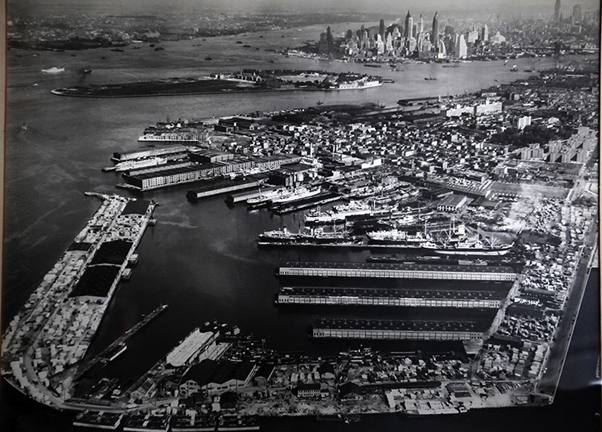
The Erie Basin and neighborhood of Red Hook. Picture courtesy of Wired NY
Red Hook - Decline and Isolation
During the 20th century Red Hook suffered from a receding wave of industrial activity within the Port. The New York Dock Company had pulled out of Red Hook (Besart, 2015), the shipping industry was changing from bulk shipping to containerization replacing, and almost all port activity was moving to the Port of Newark (Red Hook History n.d). Much of the land, warehouses, and waterfront properties were left abandoned and undesirable. The economy of the neighborhood underwent a rapid decline and unemployment levels increased rapidly. Furthermore, the neighborhood faced geographical isolation after the opening of the Gowanus Expressway and the Brooklyn Battery tunnel, segregating the neighborhood from the rest of the borough (Red Hook History n.d).
By the 1970s Red Hook had become known as a crime-ridden, desolate neighborhood. The urban fabric was deteriorating and drug use and violence were skyrocketing. In 1992 Life magazine named it one of the 10 worst neighborhoods in the U.S. and called Red Hook the “crack capital of America”. A well-publicized shooting of the beloved school Principal Patrick Daly brought a high level of police and criminal justice attention to the neighborhood (About Red Hook n.d). It was at this time the idea to establish a community court to serve the neighborhood first began circulating.
Red Hook - The Forerunner of Community Justice
Despite being located only 1-mile from the southern tip of Battery Park, Red Hook feels worlds away from the bustling streets of Manhattan. Accessible by ferry from the Wall St terminal, Red Hook is one of the last stops on the South Brooklyn ferry route.
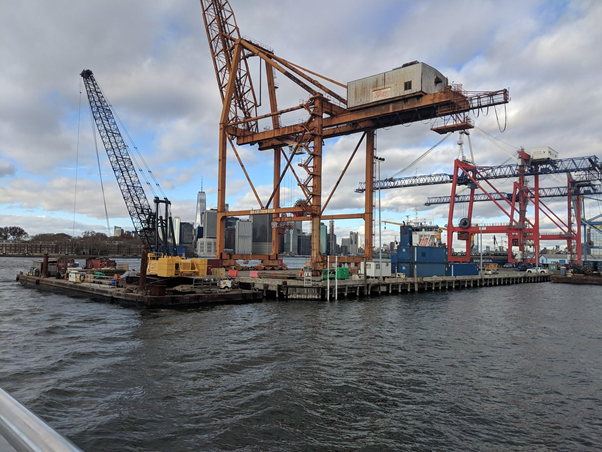
Approaching the Red Hook Ferry Terminal in the Atlantic Basin. (Photo courtesy of Jacob Kummer)
The Red Hook Community Justice Center operates out of a 90-year old Catholic school in the heart of the neighborhood that was renovated by local New York City architect Alta Indelman. The building houses one courtroom, a youth court, and various on-site support functions and service providers (Center for Court Innovation, 2015).
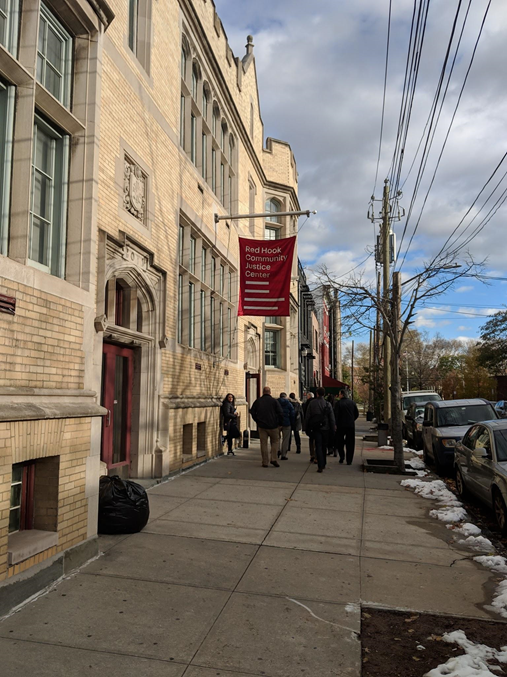
The main entrance to the Red Hook Community Justice Center (photo courtesy of Jacob Kummer)
The problems faced within the neighborhood often do not conform with the jurisdictional boundaries of the court system. Red Hook offers a multi-jurisdictional court in which all low-level Criminal, Civil, and Family cases are heard in the same courtroom by a single Judge. This expedites the process and leads to a more efficient and coordinated judicial response (Center for Court Innovation, 2015). Judge Calabrese is the presiding judge at the Justice Center. He wants every court user to feel they have been treated fairly and his approach ensures that procedural fairness is met throughout the entire process. The Judge tries to determine the underlying problem that led to the defendant’s criminal behavior by using the tools at his disposal including community restoration projects, short-term psycho-educational groups, and long-term treatment (Center for Court Innovation, 2015).
Typical sentences often include mandatory drug treatment programs, job training, community service or a combination. Therefore, justice is made more visible to local residents and defendants acknowledge the harm that crime does to their neighborhood (Center for Court Innovation, 2015). Compliance to sanctions and treatment are rigorously monitored and litigants are required to frequently report back in front of the Judge (Center for Court Innovation, n.d).
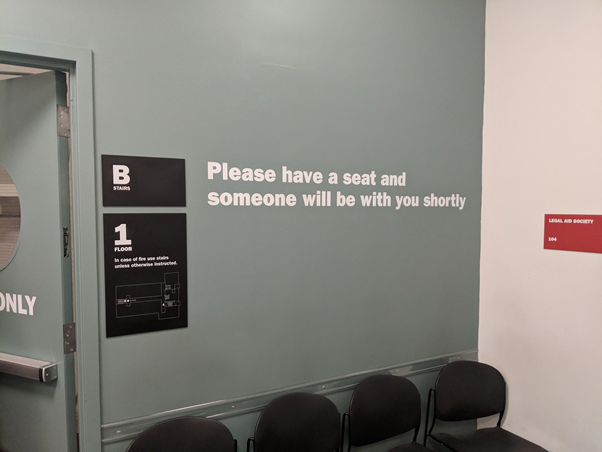
(photo courtesy of Jacob Kummer)
Defendants are linked to service providers on site which allows the court to address problems effectively before conflicts escalate. These services can range from drug treatment services, medical examinations, mental health counseling, and housing resources. These services are available to anyone in the community, not only those using the court (Center for Court Innovation, 2015).
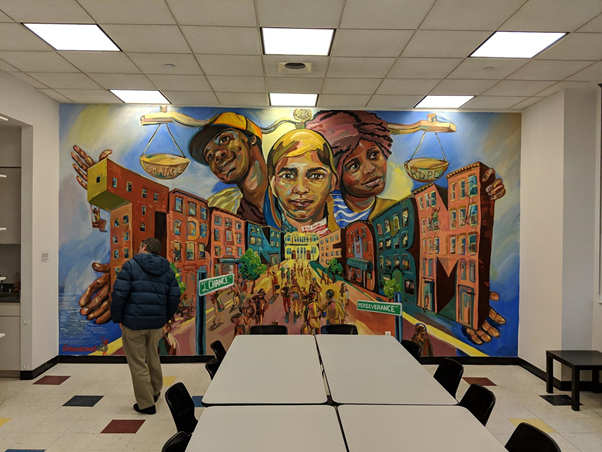
(photo courtesy of Jacob Kummer)
Red Hook is also engaged in community outreach programs which seek to resolve local problems before they are involved in the court. One of these programs is The Red Hook Youth Court which uses positive peer pressure to ensure that low-level youth offenders understand how their behavior impacts their community. The court consists of local teenagers who are trained to be the Judge and jury and sanctions can range from community service to writing a letter of apology (Center for Court Innovation, 2015).
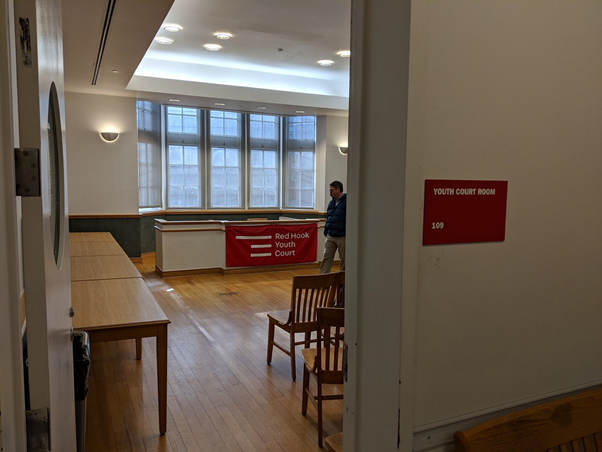
(photo courtesy of Jacob Kummer)
Red Hook has proven that by justice having a presence within the community, recidivism can be significantly reduced and communities can work together to collectively reduce crime and thrive. The Justice Center will continue to be a forerunner and serve as a leading model community prosecution for jurisdictions worldwide.
For more information on the Center for Court Innovations programs, please visit:
https://www.courtinnovation.org/
For more information on the Architect of the Justice Center, please visit:
http://altaindelmanarchitect.com/
Bibliography:
Center for Court Innovation 2015. Alex Calabrese, Judge, Red Hook Community Justice Center. https://www.courtinnovation.org/publications/alex-calabrese-judge-red-hook-community-justice-center
Hynes, Charles 2008. Red Hook's Justice Center serves as a model to world. NY Daily News https://www.nydailynews.com/new-york/brooklyn/red-hook-justice-center-serves-model-world-article-1.304721
Besart, 2015. History. https://macaulay.cuny.edu/eportfolios/redhookbrooklyn/2013/04/07/history-2/
Center for Court Innovation n.d. Red Hook Community Justice Center. https://www.courtinnovation.org/node/20088/more-info
Atlantic and Erie Basins n.d. Places Matter. https://www.placematters.net/node/1011
Red Hook History n.d. Waterfront Museum. http://waterfrontmuseum.org/red-hook-history
About Red Hook n.d. Red Hook Justice. http://www.pbs.org/independentlens/redhookjustice/redhook.html
Jacob Matthias Kummer is an Architectural Designer at NORR in Toronto, Ontario, Canada.